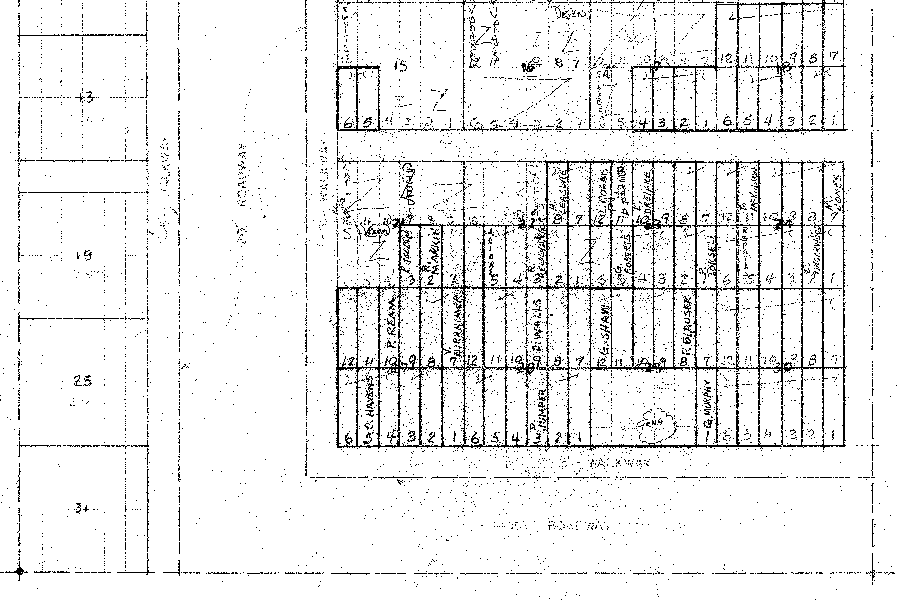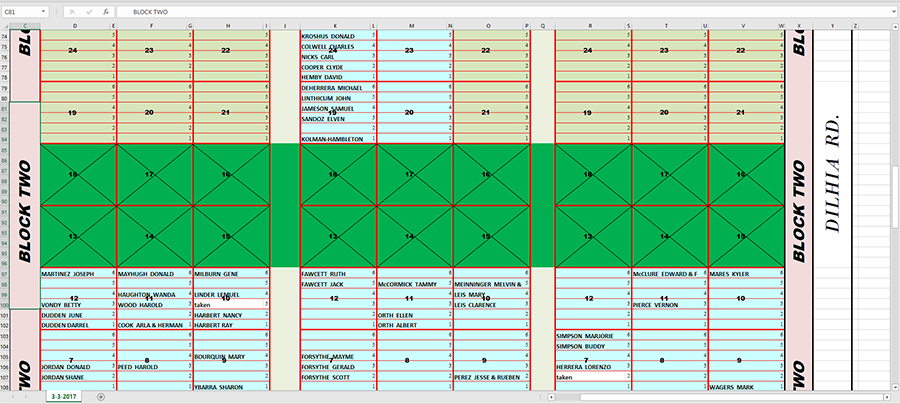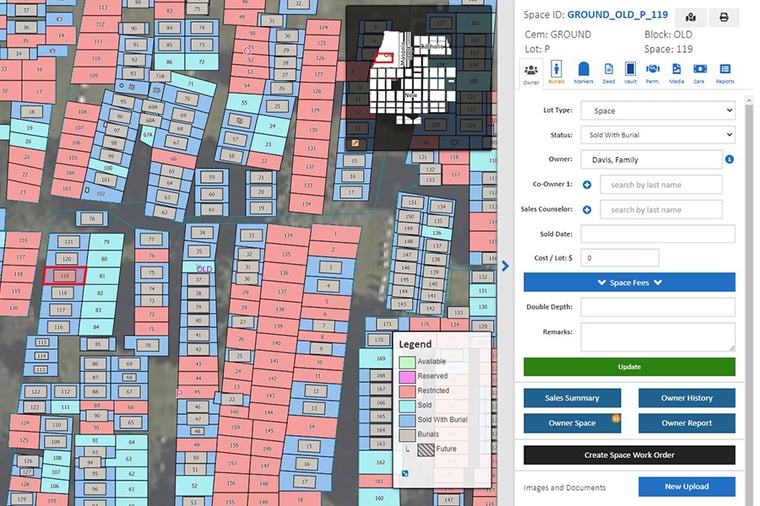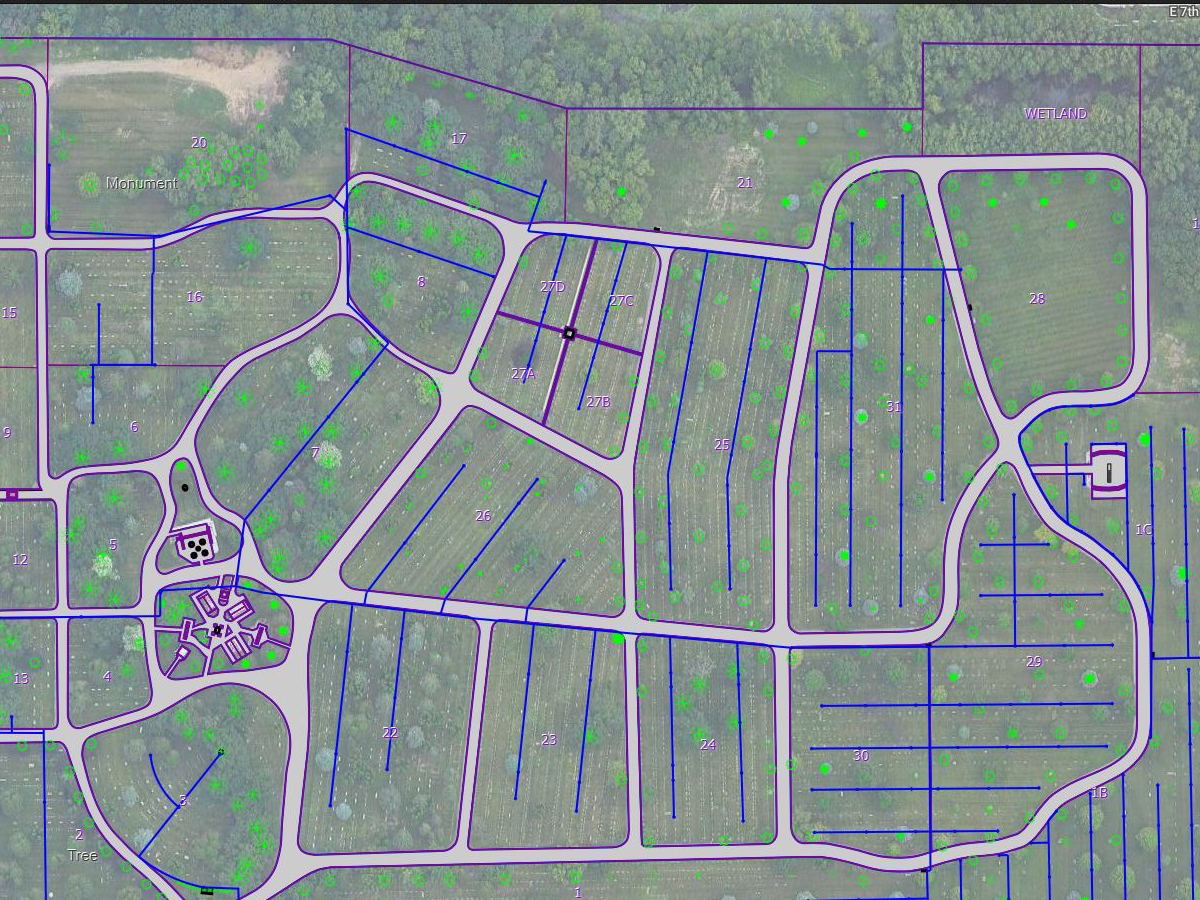What Is Cemetery Mapping?

Cemetery managers wear a lot of hats.
One day cemetery maintenance takes priority. The next: comforting grieving families.
Through it all, one task never changes. Cemetery managers are always responsible for keeping valuable cemetery information safe and secure. They protect historical deeds, contracts, and records. They preserve financial and personal documents. And of course, they maintain what is arguably the most important cemetery document: the cemetery map.
Keeping track of all this cemetery information while serving local families can be overwhelming. Without proper organization, records can get lost or scrambled. Cemetery managers handle tough situations and emotional information. Keeping records should help ease that stress instead of adding another.
So what cemetery mapping best practices can today's cemetery managers rely on?
In this post, we'll explain the importance of cemetery mapping and outline three mapping approaches for cemeteries.
What is cemetery mapping?
Put simply, maps show correspondences between things. This thing goes there. This landmark is just beyond that landmark. Cemetery mapping applies this basic idea to cemeteries. Cemetery maps communicate information about a cemetery's grounds. How big is the cemetery? How many burials are there? Which spaces are available? Cemetery mapping—when done correctly—answers questions like these.
Cemetery mapping is an important process of managing a cemetery's land and data. Maps must include detailed records of information for cemetery managers to carry out their day-to-day responsibilities.
Cemetery maps can come in different forms. Some cemeteries use analog maps, while others rely on digital ones. Regardless of the format, the goal of the cemetery map is simple: to keep all information about a cemetery in one place.

Why is cemetery mapping important?
Maintaining accurate cemetery maps is important for three reasons: up-to-date maps improve day-to-day operations, ensure your staff is selling available plots, and help local families navigate your cemetery.
To manage a cemetery successfully, you must keep up-to-date records of interments and cemetery business. Most importantly, you must know which plots can be sold. Without detailed maps and records, cemetery staff can't do their jobs well. For this reason, cemetery mapping is an important part of preserving and managing a cemetery.
The 3 most common approaches to cemetery mapping
Cemeteries have been around for centuries. Cemetery mapping has, too.
Over the years, three main types of cemetery maps have emerged. In this section, we outline the pros and cons of the most common approaches to cemetery mapping: paper records and logbooks, spreadsheets and databases, and cloud-based cemetery maps.
1. Paper records and logbooks
Paper records have been the most common way that cemeteries mapped out information in the past. Many managers use old, large logbooks. Other managers use record journals that usually come in the form of binder books. These specially made journals have labels and spaces to fill in information.
Pro: There is a familiarity that comes with paper records. They are historical documents that employees are used to accessing.
Con: Paper records aren't always reliable. They can be easily lost or damaged. It is important to have a backup plan, like digitizing the records, in case something happens to the books.

2. Spreadsheets or databases
A more modern approach to cemetery mapping is using spreadsheets or a database to input all the cemetery's information. Managers can create their own tabs and fill in information in columns and rows that make the most sense for the ways they run their cemeteries. With this approach, all the data is complied in one digital document.
Pro: Unlike paper records, spreadsheets can be updated without running out of room. Plus, spreadsheets can serve as valuable backups to paper records.
Con: The biggest drawback of using a spreadsheet as your cemetery map is that spreadsheets don't look like cemetery grounds. Unlike cemetery mapping software, spreadsheets don't incorporate imagery of your cemetery or link burial records to specific burial locations. Furthermore, it's difficult to put images, deeds, invoices, and other important information into a spreadsheet.
Looking to transition cemetery information from an existing spreadsheet or database? Learn more about data migration services from CIMS.

3. Cloud-based cemetery mapping software
Cloud-based cemetery software integrates information from spreadsheets, logbooks, and maps into one powerful database. Select software also includes interactive digital maps with icons and images that designate important cemetery features.
Pro: Navigation is simple with cloud-based software. Managers and employees can access records and log new ones. The software stores images, data, and custom reports. The software can be as hands on as you like with visuals that can be easily manipulated to resemble your cemetery.
Con: Cost. Cost is a valid concern while maintaining a cemetery. Paper records come with costs that can eventually affect your cemetery if not properly maintained. However, cloud-based software can be cost-effective in the long run by saving cemeterians time and streamlining the plot selling process.

Upgrading to cloud-based cemetery mapping software
Companies across industries are moving records to the cloud. Cemeteries are no exception.
Cloud-based cemetery mapping software ensures that cemeteries won't be left behind by giving cemetery managers real-time insights into which plots are sold and which ones are available.
Ready to upgrade your cemetery maps? Schedule a virtual demo with a CIMS expert.


